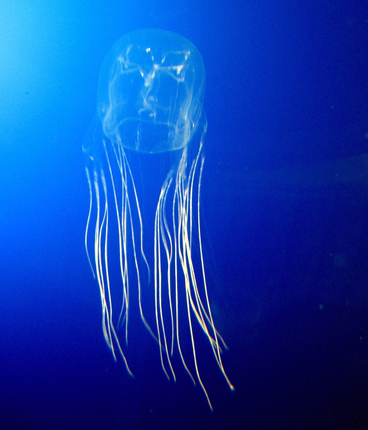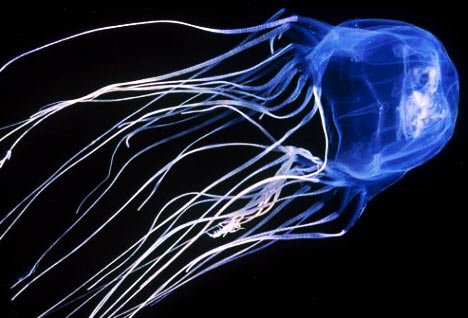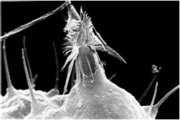|
Box Jellyfish CLASSIFICATION GENERAL INFO SPECIAL FEATURES HABITAT DIET REPRODUCTION BODY SYSTEMS HUMAN IMPACT WEBLINKS SOURCES
| ||||

Kingdom: Animalia
SPECIAL FEATURES REPRODUCTION
Box jellyfish stings
|
GENERAL
INFO:
The box jellyfish is one of the most lethal jellyfish in the world. It has caused around 64 deaths in Australia, where it is commonly found, since deaths were first recorded in 1883. The amount of venom in one jellyfish is said to be enough to kill 60 humans in one sting. Being stung results in a very large amount of pain and if not treated, the victim can die within three minutes.
BODY SYSTEMS The skeletal system consists of a hydrostatic skeleton, and an organic exoskeleton. It has no digestive tract, so it uses cilia in the digestive cavity to move gases, water, and dissolved food around before absorbtion. The nervous system consists of of four eye clusters with 24 eyes on each cluster. It is believed that they can distinguish color somewhat, although it is still debated on whether or not they can form images. They are also one of the few species of jellyfish to possess a nerve ring, which is located around the base of the umbrella. Little is known about how they process information though, because of the lack of a central nervous system. The stingers on the tentacles are the most important part of the jellyfish. They are used to catch their prey, but sometimes unfortunately they are used to sting humans. If a person is stung, they can die within 4 minutes. |
HABITAT:
Box jellyfish are usually found in the estuaries in northern Australia. They have also been found off the coast of New Guinea, the Phillipines, and Vietnam.
DIET: HUMAN IMPACT: http://www.youtube.com/watch?v=pYUZxS1bZR4
Nematocyst | ||



